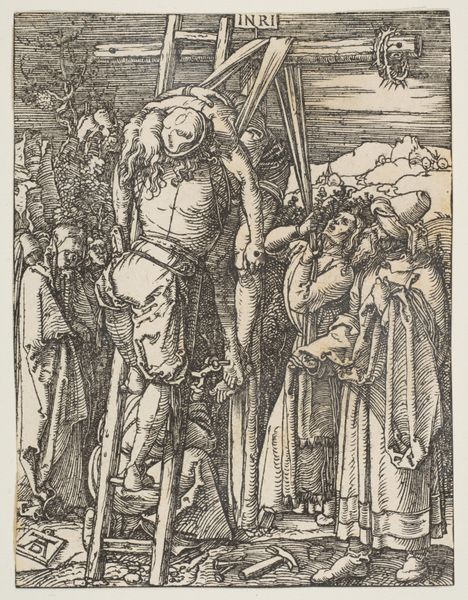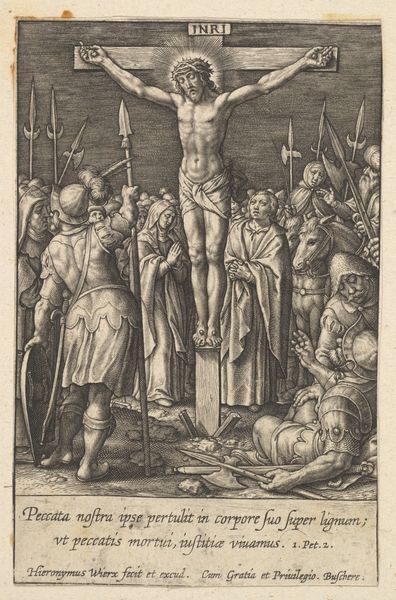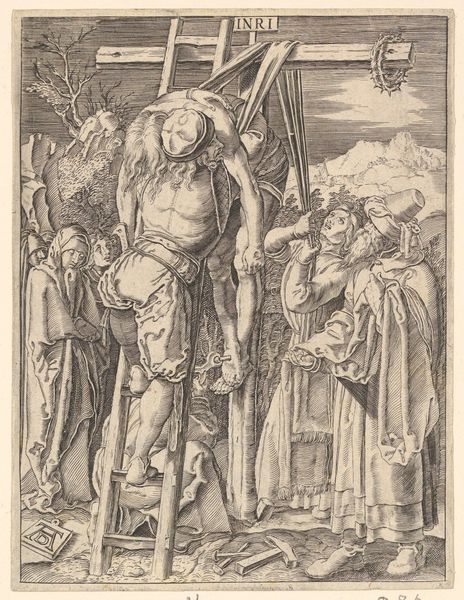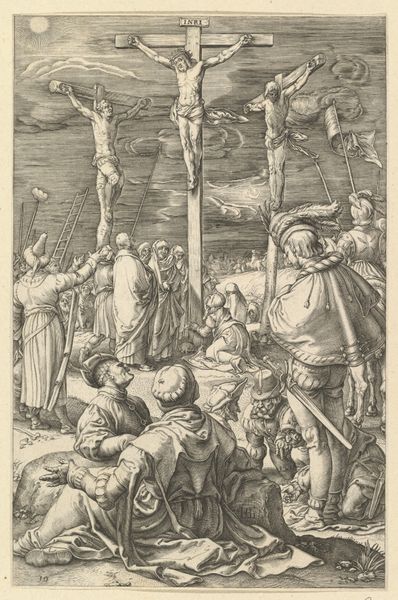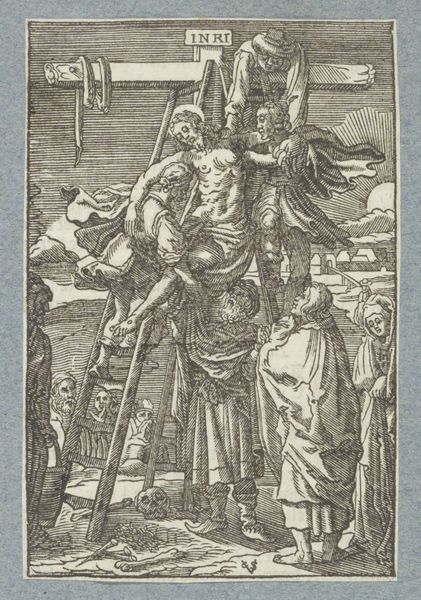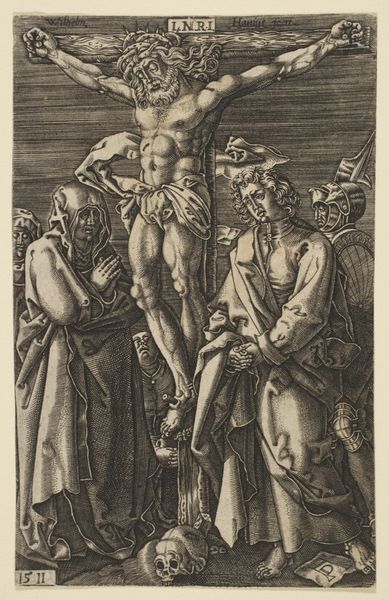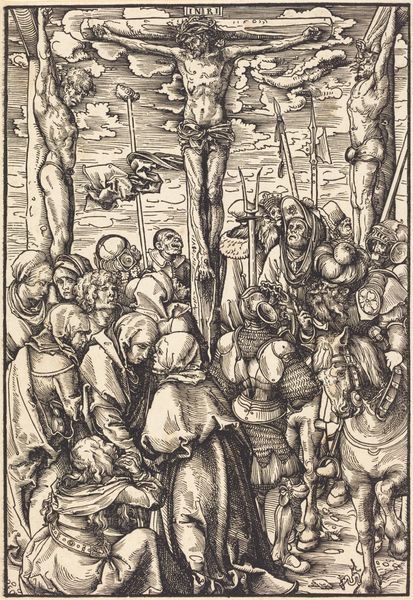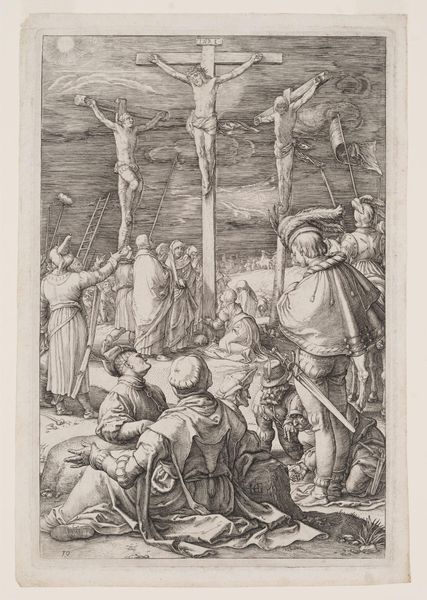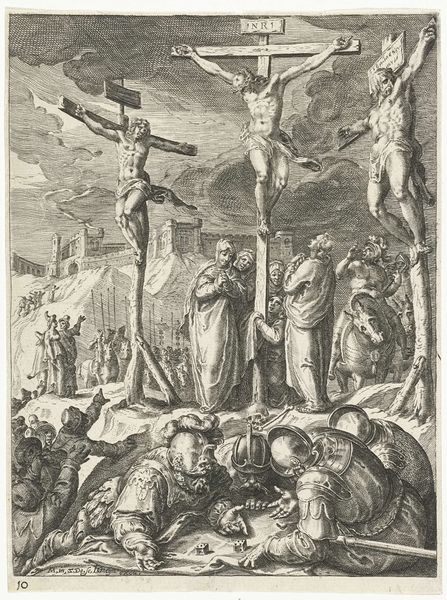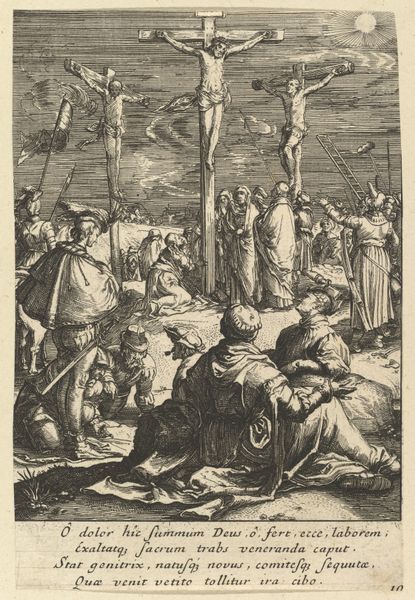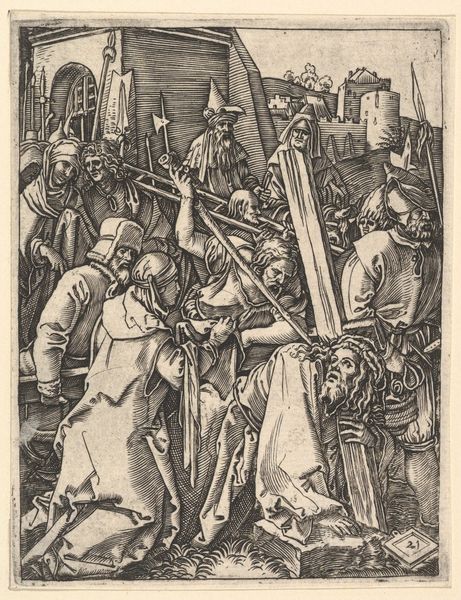
The Descent from the Cross; Christ being taken from the cross, St John supports weight with cloth rope, after Dürer 1495 - 1539
0:00
0:00
Dimensions: Sheet: 5 1/16 in. × 4 in. (12.8 × 10.1 cm)
Copyright: Public Domain
Curator: Today we are observing Marcantonio Raimondi’s print, “The Descent from the Cross; Christ being taken from the cross, St John supports weight with cloth rope, after Dürer,” dating sometime between 1495 and 1539. The work is currently held at the Metropolitan Museum of Art. Editor: It's quite a dramatic scene rendered with such precision! The stark contrasts in the linework create a palpable sense of grief and urgency. The sheer detail pulls me right in. Curator: Indeed. What we see here is Raimondi working as an engraver and printmaker copying the work of another artist—Albrecht Dürer, as the extended title tells us. It highlights the craft involved in disseminating imagery at the time, as well as the complexities of artistic appropriation. Editor: The symbols are quite striking. Beyond the obvious central image of Christ being lowered from the cross, note the tools at the base. The hammer and what looks like a wrench; all instruments involved in this grim task. And St. John, holding Christ with cloth, almost seems like an updated Pietà, holding death himself. Curator: That is certainly a reading aligned with art history and the iconic status of religious imagery! For me, it brings up questions of labor. Someone had to design it, transfer it, engrave it, print it... and then, this image circulated. So much hand work here, that’s now encased in a famous institution, separated from it's original material existence. Editor: You make a very good point about circulation. Here we see an artist copying the work of another and in the process it's acquiring new context. Dürer's interpretation, filtered through Raimondi's skill as a craftsman. Even the style feels symbolic—all those tightly controlled lines communicate something powerful. Curator: It makes you consider how images were commodified even then. And consider also that prints democratized art to an extent, bringing religious scenes and other artistic subjects into homes that could not afford paintings. That accessibility shaped beliefs as well as tastes. Editor: Yes. So it's both about devotional iconography, but equally it is about networks of making and accessing religious imagery through printing. The emotional weight here comes not just from the scene depicted, but also the cultural weight. I hadn't considered the social aspect so deeply. Curator: Seeing the piece now really prompts thoughts on the historical movement of artistic techniques and image culture. Editor: And it invites reflection on how, through symbols and imagery, one era speaks to the next. Thank you for sharing your perspective.
Comments
No comments
Be the first to comment and join the conversation on the ultimate creative platform.
